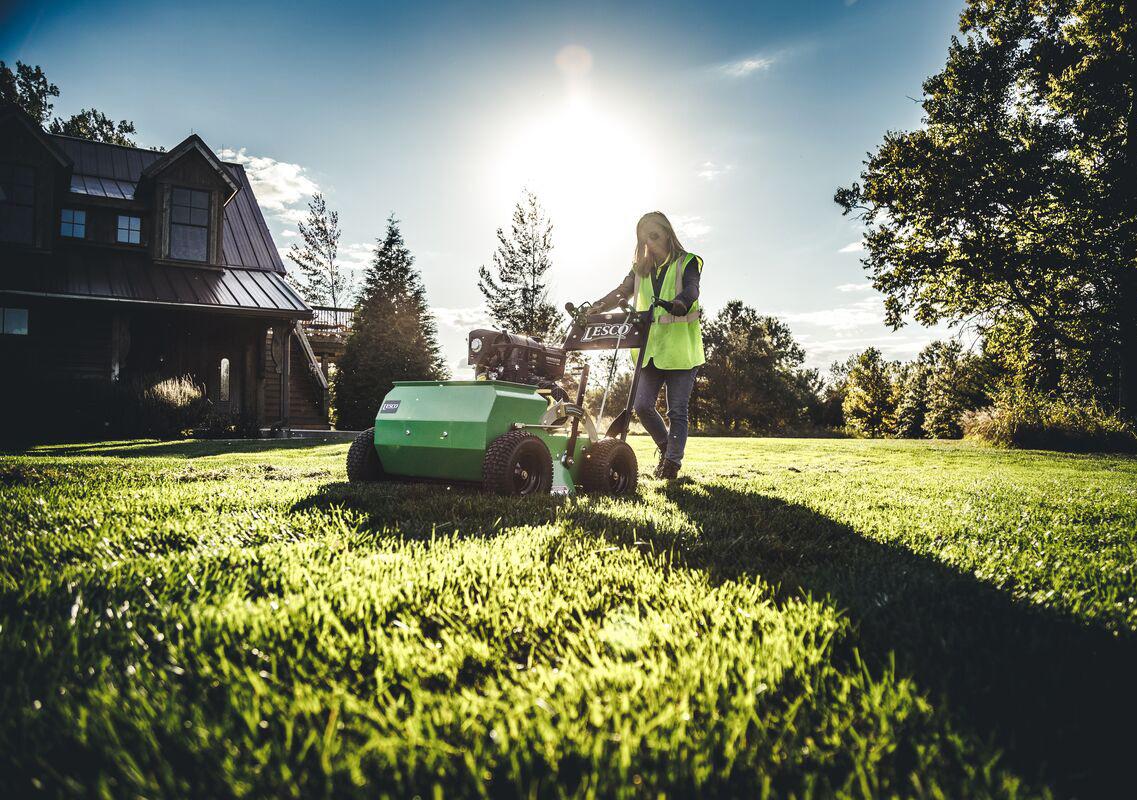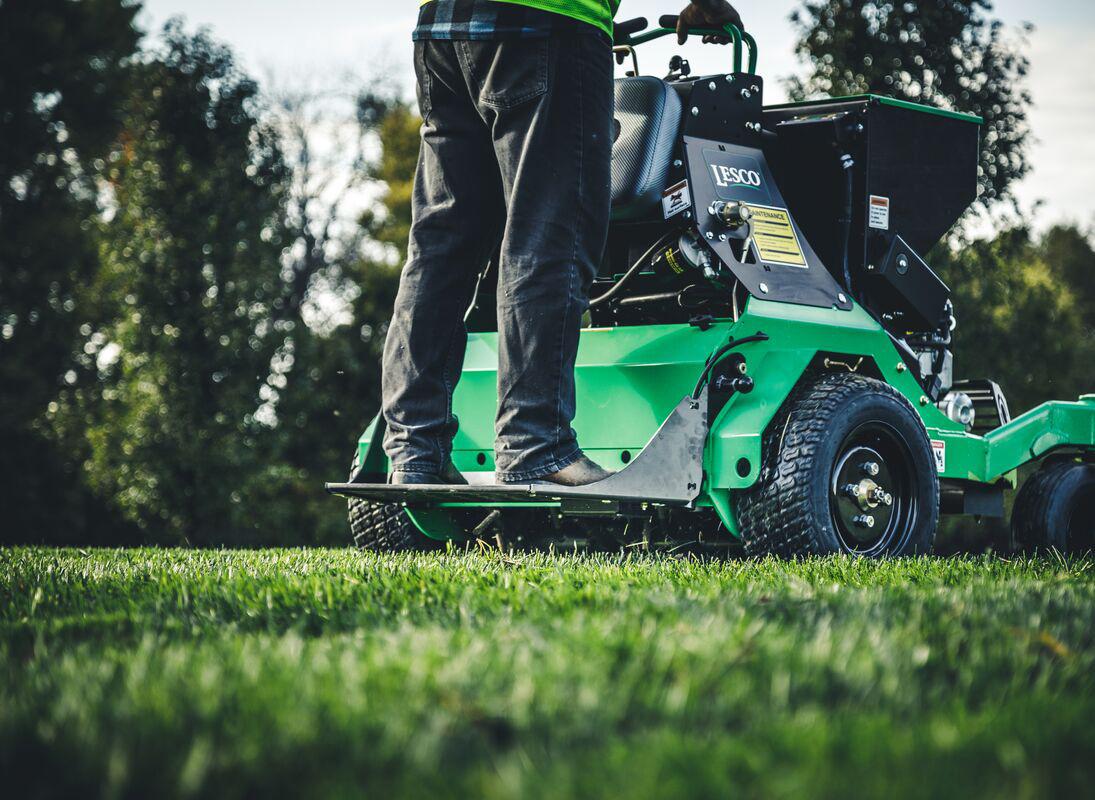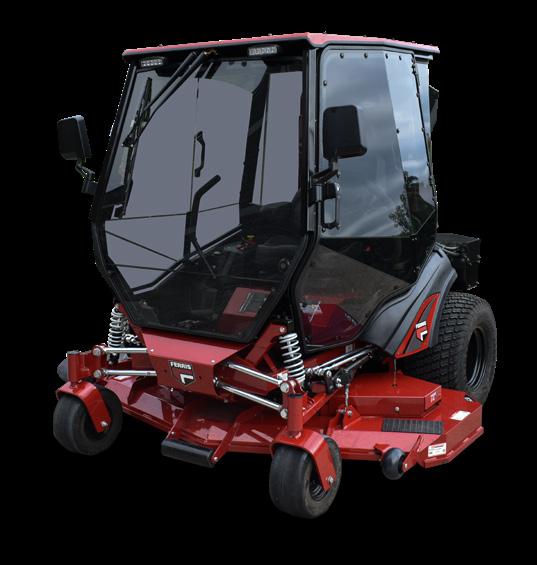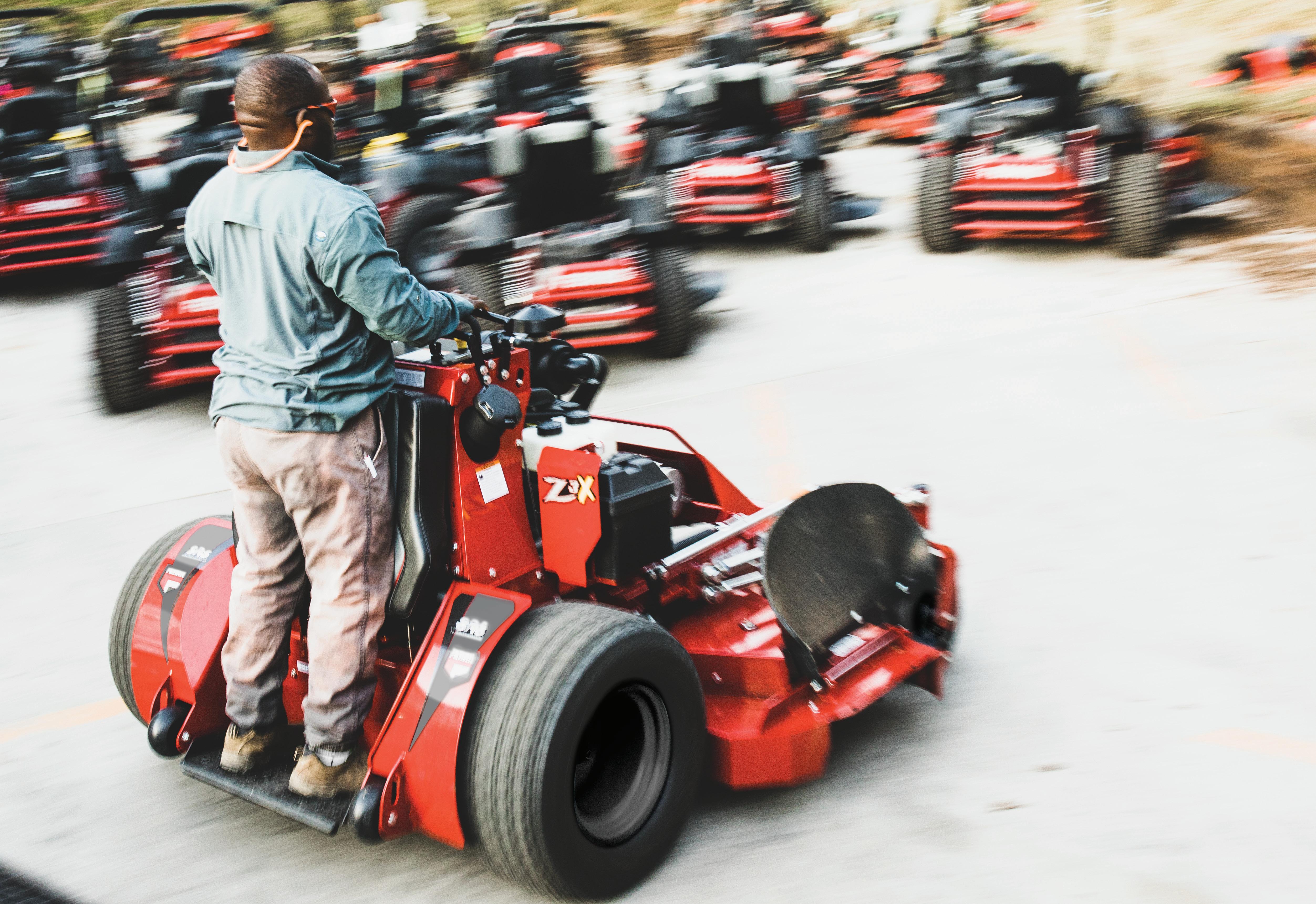
5 minute read
LAWN CARE | OFFERING DETHATCHING AND AERATION SERVICES
Dethatching & Aerating: When, Why and How to Treat Turf
Advertisement
After the heat of summer, turf often needs to be rejuvenated. Fall is a great time to boost turf health by dethatching and aerating. Knowing how to recognize thatch and when to do something about it allows lawn care operators (LCOs) to make recommendations to their customers that not only keeps their lawns healthy, but helps LCOs grow their business by proposing added services. Here are three steps to identify, treat and offer businessgrowing turf rejuvenation services to your customers.
Identifying Thatch Buildup
Let’s start by understanding what thatch is and why it can be a concern. Unhealthy grass has a layer of buildup between the grass blades and the soil, called thatch, that needs to be removed when it becomes too thick. A lackluster lawn can be a sign of too much thatch—discoloration, thinning, weeds, etc. Looking at a soil sample can confirm if thatch buildup is the issue. LCOs can check thatch thickness by simply digging up a small section of the lawn, about 2 or 3 inches wide, and measuring the thatch layer. Anything thicker than 0.5 inch means it’s time to take action.


SiteOne Landscape Supply
Thatch is made up of organic matter, like grass clippings and dead roots, that accumulate faster than they can break down. It often builds up naturally over time due to over or underwatering, cold soil temperatures and poor drainage.
It’s important to note that a small layer of thatch is beneficial as it helps conserve moisture and penetrate nutrients into the soil. However, a thick layer of thatch prevents proper watering, blocks pesticides and nutrients from doing their job and creates shallow root systems— all causing customers’ turf to suffer.
Dethatching and aerating are the two most common ways to repair a thatch problem, and they’re often used together for optimal results.
Dethatching
Dethatching is the first step to healthier turf. The process involves removing excess thatch by using a rake or tool that cuts into the soil and pulls out dead grass blades.
Manual rakes, power rakes and verticutters are popular dethatching tools. Which one to use will depend on the size and severity of the project. A manual rake works best for moderate thatch buildup on smaller lawns. For commercial customers with larger square footage or a more severe thatch buildup, it’s best to use a power rake or verticutter.
LCOs will need to dethatch whenever the layer of thatch becomes too thick. This could be every few years or every year. Monitor customers’ turf annually to determine how often to perform dethatching services.
Overseeding
Aerating
A well-textured soil profile is necessary to achieve healthy turf. Aeration is the process of removing small plugs of soil to allow air, water and nutrients to penetrate the soil. Regardless of how often LCOs dethatch a customer’s turf, aeration should generally be performed annually.
Similar to dethatching equipment, aerators come in a variety of options. Manual aerators are available, but these aren’t recommended for business/ commercial use because they are much more labor intensive. Walkbehind aerators are more efficient, and stand-on aerators are the most efficient option as they get the job done quicker and require less labor, saving LCOs money in the long run.
Whether aeration should be part of fall turf renovation depends on the turf type. Cool-season varieties grow vigorously in the fall and recover quickly from the stress of aeration. Aerating cool-season grass in the fall will lead to stronger rejuvenated turf. On the other hand, warm-season varieties should be aerated during its rapid growth period in late spring or early summer.
Follow aeration with fertilization— preferably a starter fertilizer high in phosphorus. Phosphorus is essential to grass seedlings since they require more of this nutrient for establishment. The perforated soil will accept nutrients more easily, and the turf will become stronger and thicker.
After dethatching and aerating, LCOs can recommend overseeding as an added service. Overseeding is especially prevalent in the Transition Zone because tall fescue turf needs to be rejuvenated after periods of high heat. Depending on the region and customer’s needs, overseeding could be a great way to help lawns remain thick and healthy all while growing the business.
Select the right variety of seed for the best results. Don’t forget to apply a good starter fertilizer with appropriate levels of NPK to aid in germination and strong root development.
Managing Customer Expectations
It’s important to recognize that performing any of these services does not yield instant results. Be sure to manage expectations with the customer prior to dethatching and aerating so they understand there will be a waiting period before they start seeing new growth and a beautiful green lawn.
Keep in mind that the question of when to perform dethatching and aeration is a matter of location and grass type. Understanding how to address thatch buildup and properly preparing for the growing season will aid in business growth. Nick Schomer Director of Category Management SiteOne Landscape Supply

CURTIS INDUSTRIES, LLC., EXPANDS ITS PREMIUM AIR-CONDITIONED CAB LINE WITH OFFERINGS FOR THE JOHN DEERE Z994R & FERRIS ISX3300, ZERO TURN MOWERS.
These cabs feature state-of-the-art, lightweight aluminum design, complemented by tinted, hard-coated, scratch-resistant polycarbonate windshields and doors. The cabs include our highperformance air conditioning system, which incorporates a belt-driven, automotive-style compressor. The Curtis Premium Air-Conditioned Cab offers users the ultimate operator comfort with protection from the sun, heat, rain, dust, and insects.

PREMIUM CURTIS CABS BOAST: • High-performance Air Conditioning, to keep you cool on the hottest of days • Tinted, hard-coated polycarbonate windshield & doors • Large clear doors and windshield offer exceptional visibility • Lockable, rear pin-hinged doors for easy entry and exit • Doors remove easily - without tools • Drop-on cab design reduces installation time and complexity • A/C System comes pre-charged from our factory
Curtis Cabs are available from your local authorized Curtis Dealer.









